Emergency Food Planning
The pandemic has sharply highlighted the need for cities to prepare themselves for disruptions to their local food system. From November 2021 to February 2022, we hosted a webinar series in which we explored emergency food planning within the context of four different types of food system disruptions. These webinars are now all available to watch back below.
Cities will learn strategies and be provided with actionable resources to develop emergency food and recovery plans tailored to their city’s unique food system pressures. We also discuss how to gain input from subject matter experts and food system organizations to make sure the plans are efficient, equitable and in alignment with broader sustainability and food system goals.
Speakers include experts, policymakers and practitioners from across the world. Each webinar is accompanied with learning resources and a Tactics to Try case study. We have compiled them into a single resource to provide insight, information and inspiration for cities worldwide, as they plan for recovery, response and resilience against both acute and chronic food emergencies.
Access the full Tactics to Try collection:
TACTICS TO TRY FOR EMERGENCY FOOD PLANNING:
Building knowledge and momentum for Emergency Food Planning
Visit FOOD CITIES 2022 Learning Platform home page.
1. Strategies for emergency food planning motivated by the pandemic
The pandemic was a wakeup call, as many cities found that they were not adequately prepared to handle the subsequent emergency food crisis. In this webinar, we focus on the spike in food insecurity due to increased poverty and inflated food prices. We will revisit Pune and Milan to hear about their progress and the ultimate impact of the pandemic on their food system. Cities will learn strategies and policy interventions to address this type of emergency food crisis.
Wednesday 3rd November, 14:00PM GMT
6.58 - Sylvie Wabbes, FAO: Multi-risk management for resilient agriculture and food systems (download presentation)
25.06 - Bobby Zachariah, Pune: Emergency collaborative COVID response (download presentation)
39.58 - Andrea Margarini, Milan: Milan experience (download presentation)
Explore topic resources by clicking Read More.

Local food systems and COVID-19: A glimpse on India’s responses
- This article explores the impact of the COVID-19 pandemic on food systems and details strategies employed by the Indian government to mitigate the effects of the crisis on food security in India.
- Explanations of the pandemic’s impact on food systems, particularly harvesting and post-harvesting activities are provided, and detailed descriptions of successful strategies employed by various levels of the Indian government and other key stakeholders are provided.
- This case study provides important lessons learned from the impacts of COVID-19 on food systems and is a useful resource for local and national governments, as well as on-the-ground practitioners as they consider how to plan for this kind of emergency
Photo credit: Arun P James
Local food systems and COVID-19: A glimpse on India’s responses (2020)
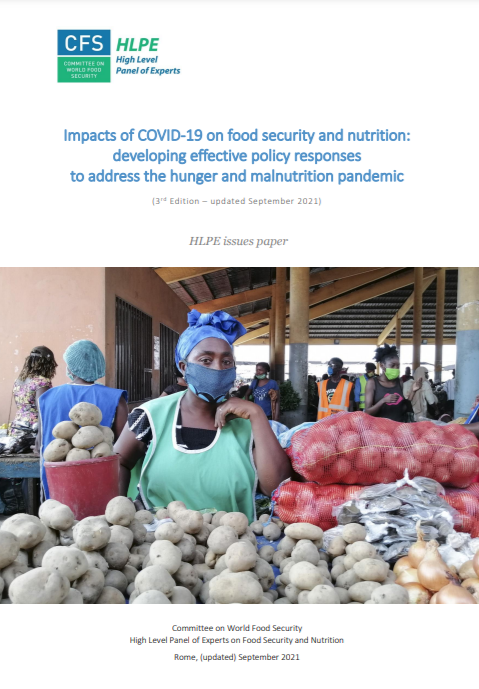
Impacts of COVID-19 on food security and nutrition: developing effective policy responses to address the hunger and malnutrition pandemic
- This report is a comprehensive review of the numerous issues affecting food systems as a result of the COVID-19 pandemic, and includes an in-depth analysis of the pandemic’s effects on food security worldwide.
- Six key dimensions of food insecurity, as well as on-the-ground dynamics of COVID-19 threatening food security, are explored in detail.
- The report concludes with lessons learned and recommendations for future policy shifts to achieve food security following this crisis, and provides a useful starting point for cities, national governments, and civil society actors as they plan for the wide scope and effects of this kind of crisis on food systems.

Food Security and COVID-19
- This brief article by the World Bank reviews risks to food security, including inflated prices and reduced incomes, resulting from the COVID-19 pandemic.
- Interventions supported by the World Bank at the country level throughout the world are described. The articles details support in the forms of monetary aid for small-scale farmers, emergency food kit distribution, purchasing seeds and fertilizer for farmers, funding community kitchens, and monetary support for feeding young children through the crisis.
- This article provides examples of how funding programs in the agricultural sector and elsewhere has helped support people worldwide through the pandemic, and is useful for those planning for financial resource allocation during this kind of crisis.
Photo credit: Kwame Amo/Shutterstock
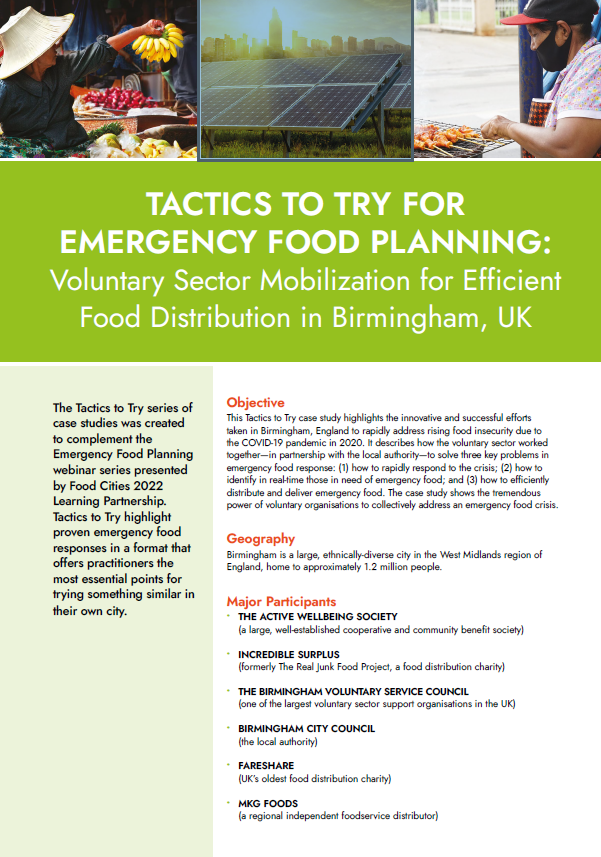
Tactics to Try: Birmingham, UK, Case Study
- This Tactics to Try case study highlights the innovative and successful efforts taken in Birmingham, England to rapidly address rising food insecurity due to the COVID-19 pandemic in 2020. It describes how the voluntary sector worked together—in partnership with the local authority—to solve three key problems in emergency food response: (1) how to rapidly respond to the crisis; (2) how to identify in real-time those in need of emergency food; and (3) how to efficiently distribute and deliver emergency food. The case study shows the tremendous power of voluntary organisations to collectively address an emergency food crisis.

URBAN LOCKDOWN LESSONS FOR SOUTH AFRICA: INSIGHTS AND OPPORTUNITIES FOR EQUITABLE FOOD SYSTEMS
- This report by WWF South Africa is a case study focusing broadly on creating urban food systems in South Africa that are more resilient to shocks and stresses, with particular attention to the COVID-19 pandemic, climate change, and food insecurity.
- Sections of this report point to the need for urban food policies that plan for increasing urban populations, climate change, and food security while also including specific actions taken in urban areas to mitigate the effects of the pandemic and climate change.
- The case study concludes with a call-to-action for local governments to ensure the right to food and nutrition. The report contains valuable information for local governments and civil society actors at the city-level through detailed descriptions of how cities in South Africa managed lockdown and continue to grapple with the effects of climate change on food systems.
2. Emergency food plans for refugees, migrants and communities in crisis
In the second webinar of our series, we explore cities grappling with feeding refugees, migrants and displaced people and the impacts on their local food system. Emergency food planning for this type of crisis needs to be culturally competent and sustainable. We will hear from experts and cities on the different types of local food system impacts that may be expected and learn about specific strategies and policy interventions to include in an emergency food plan.
Wednesday 24th November, 14:00PM GMT
6.58 - Tiziana Zoccheddu, WFP: WFP's role in refugee assistance
28.20 - Catherine Gimono, WFP: Cash based refugee assistance in Uganda (download presentation - shared with Tiziana)
38.50 - Fuat Ozharat, Metropolitan Municipality Foreign Affairs Department Gaziantep, Turkey: Gaziantep Governance model in migration management (download presentation) (please also see detailed case study in resources below)
Explore topic resources by clicking Read More.
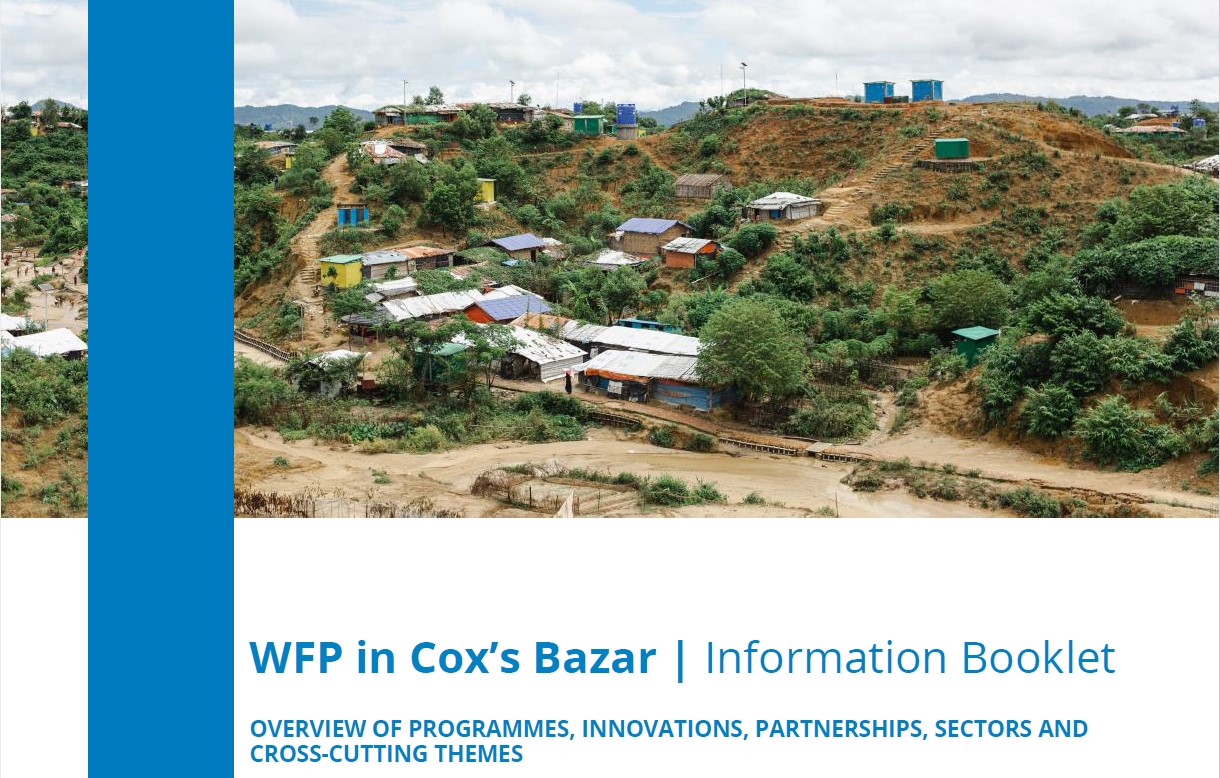
World Food Programme in Cox's Bazaar: Information Booklet
• This report describes the successful interventions of the World Food Programme in a large Rohingya refugee settlement, Cox’s Bazaar, in Bangladesh, providing details on specific challenges and how the WFP is working to address them.
• It describes the partnerships with United Nations organizations and NGOs (national and international), making this a useful resource for communities seeking to coordinate aid to reach refugee communities.
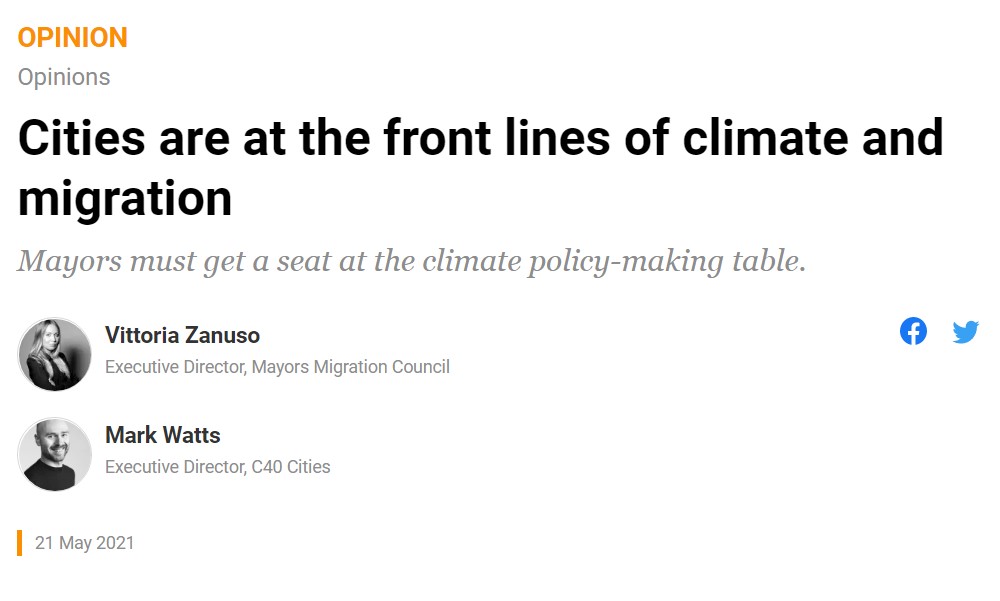
Cities are at the Front Lines of Climate and Migration: Mayors Must Get a Seat at the Climate Policy-Making Table
• This article argues for the inclusion of local city governments in making policy and investment decisions about the increasing number of climate-displaced people since most will be moving into urban areas.
• The successful efforts of mayors in cities in Sierra Leone, the United States, and Bangladesh in managing both the climate crisis and the people displaced by it are described.
• This article is useful for cities seeking to engage with larger governing bodies to reduce risk and manage crises.
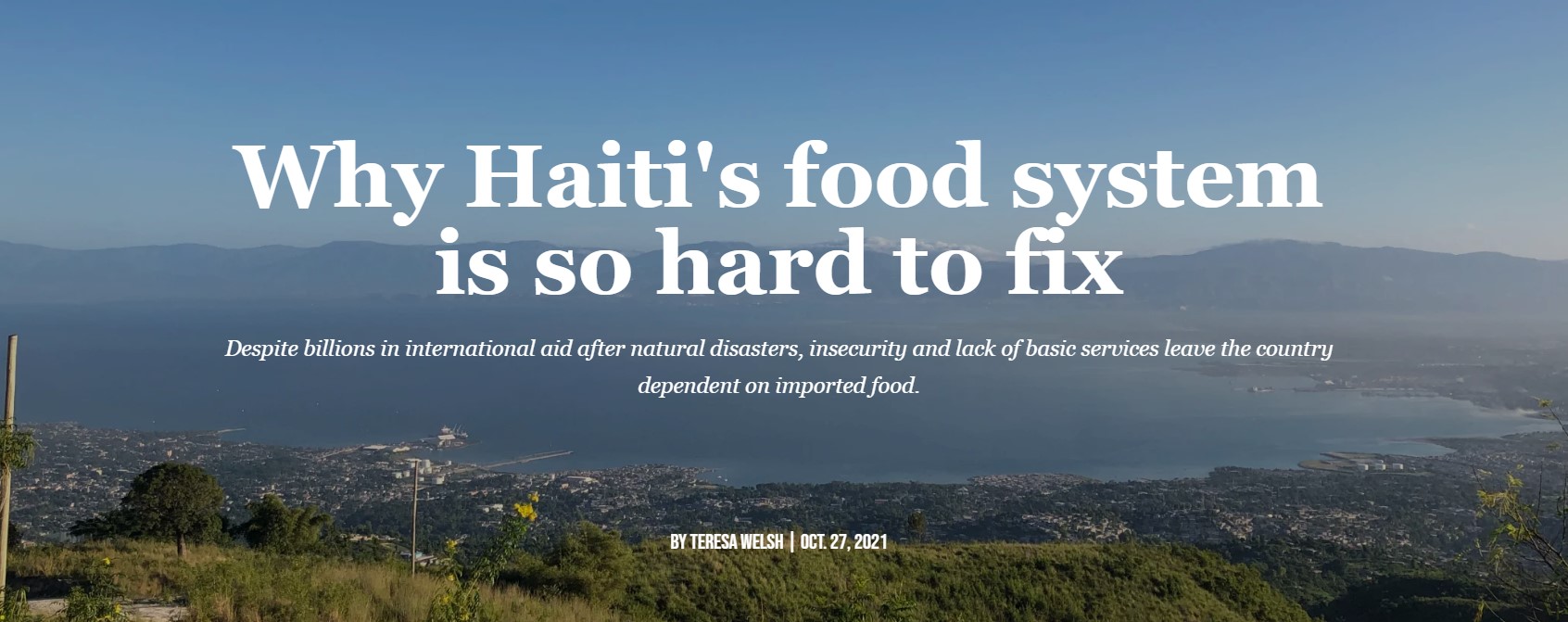
Why Haiti’s Food System is So Hard to Fix
• This visual article from Devex describes the numerous difficulties of providing emergency food in Haiti.
• It highlights the relatively high cost of procuring local food (versus imports) for aid agencies in some countries and the consequences for local farmers and building resilient food systems (the short-run/long-run trade off of emergency food procurement).
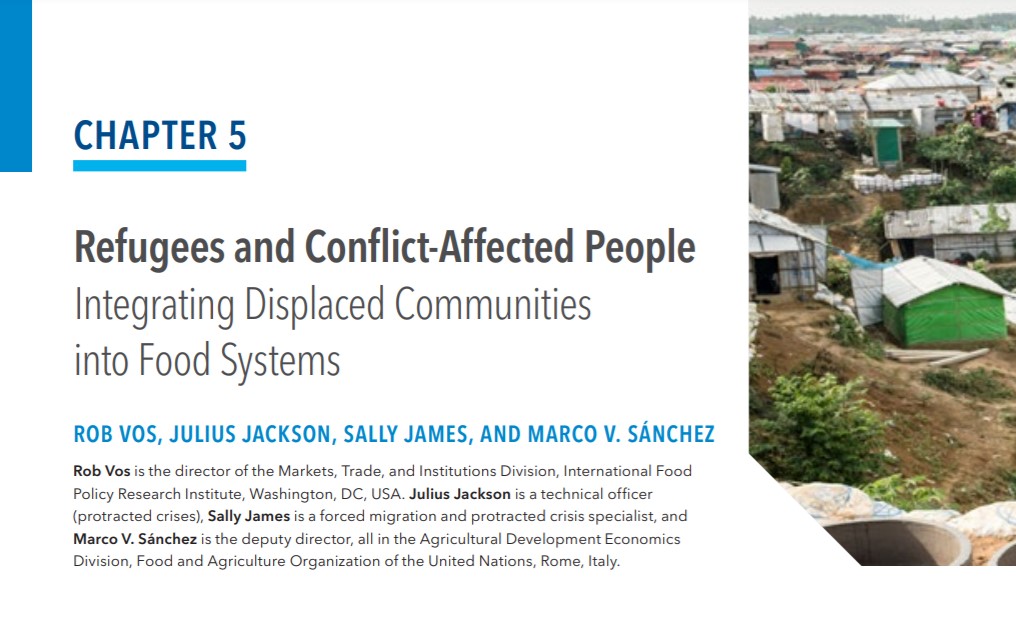
Refugees and Conflict-Affected People: Integrating Displaced Communities into Food Systems.
• This chapter in IFRPI’s Global Food Policy Report looks at emergency food for refugees around the world, including examining the conflict-based food insecurity crisis in Yemen
• It includes a discussion of the cash transfer programs often used to provide food and other resources to refugees and migrants
• The authors present several important policy interventions that have been successful in both the short-term and long-term, and are useful references for cities planning for emergency food aid for refugees and displaced people.
Global Food Policy Report 2020: Building Inclusive Food Systems
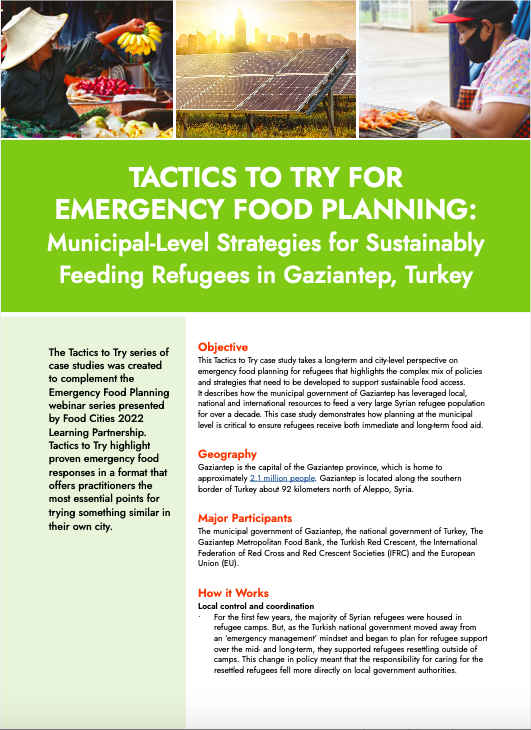
Tactics to Try: Gaziantep, Turkey, Case Study
- This Tactics to Try case study takes a long-term and city-level perspective on emergency food planning for refugees that highlights the complex mix of policies and strategies that need to be developed to support sustainable food access. It describes how the municipal government of Gaziantep has leveraged local, national and international resources to feed a very large Syrian refugee population for over a decade. This case study demonstrates how planning at the municipal level is critical to ensure refugees receive both immediate and long-term food aid.
3. Planning for filling the gap when food stores are forced to close
In the third webinar of our series, we address the impact of a natural disaster on local food systems, which may cause significant disruptions to food supply chains, physical barriers to accessing food and the closure of food stores. In this type of situation, emergency food response and recovery plans need to be aligned with broader emergency management plans, prioritized within these plans, and include leveraging various food assets to ensure all residents have access to food over an extended period.
Wednesday 15th December, 14:00PM GMT
6.45: Interview with Chris Rebstock of The Global FoodBanking Network
20.30: Interview with Alex Amparo of Federal Emergency Management Agency (FEMA)
36.00: Interview with Denise Santos of Banco de Alimentos Puerto Rico
58.00: Discussion
Explore resources by clicking Read More.
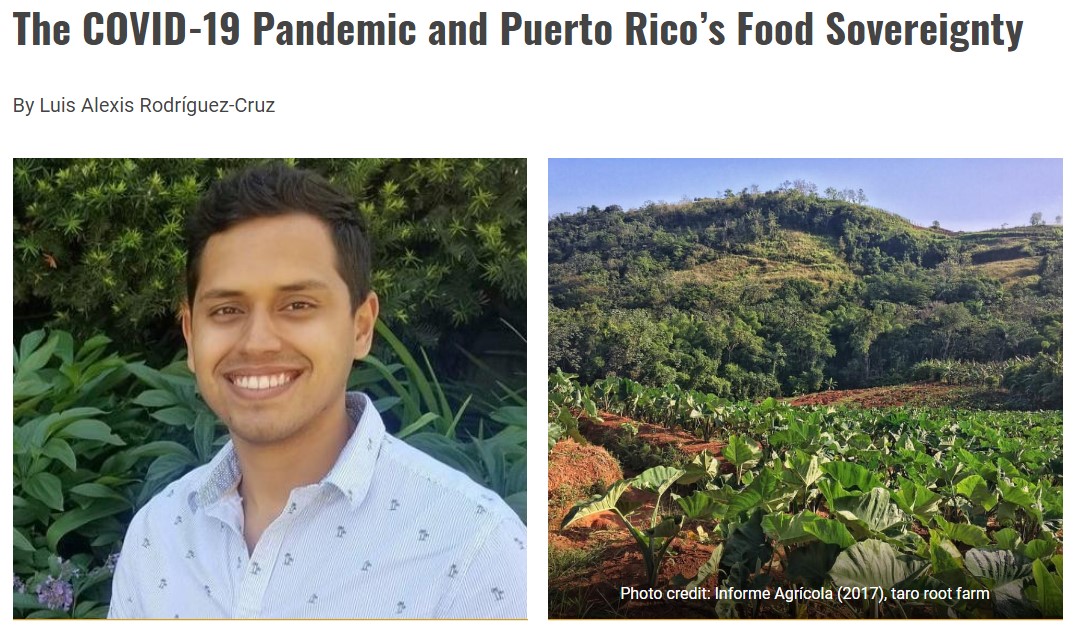
The COVID-19 Pandemic and Puerto Rico’s Food Sovereignty.
- This op-ed piece highlights the issues facing island food systems, including high rates of imported foods, regular exposure to extreme weather events, and the potential for supply chain disruption. Food security and food sovereignty are explored as critically important and closely related concepts.
- This piece provides important perspectives for those considering how to improve security in small island economies.

Tactics to Try - Planning for Catastrophic Events with Lessons Learned from Puerto Rico
This Tactics to Try case study describes the devastating effects of Hurricane Maria on Puerto Rico’s food system in 2017. We provide some insights behind the startling ‘All the Food Is Gone’ headlines that appear after catastrophic hurricanes hit any region. The lessons learned from the Puerto Rico case provide key areas for other cities to consider as they develop robust emergency food plans for natural disasters.
Tactics to Try - Planning for Catastrophic Events with Lessons Learned from Puerto Rico
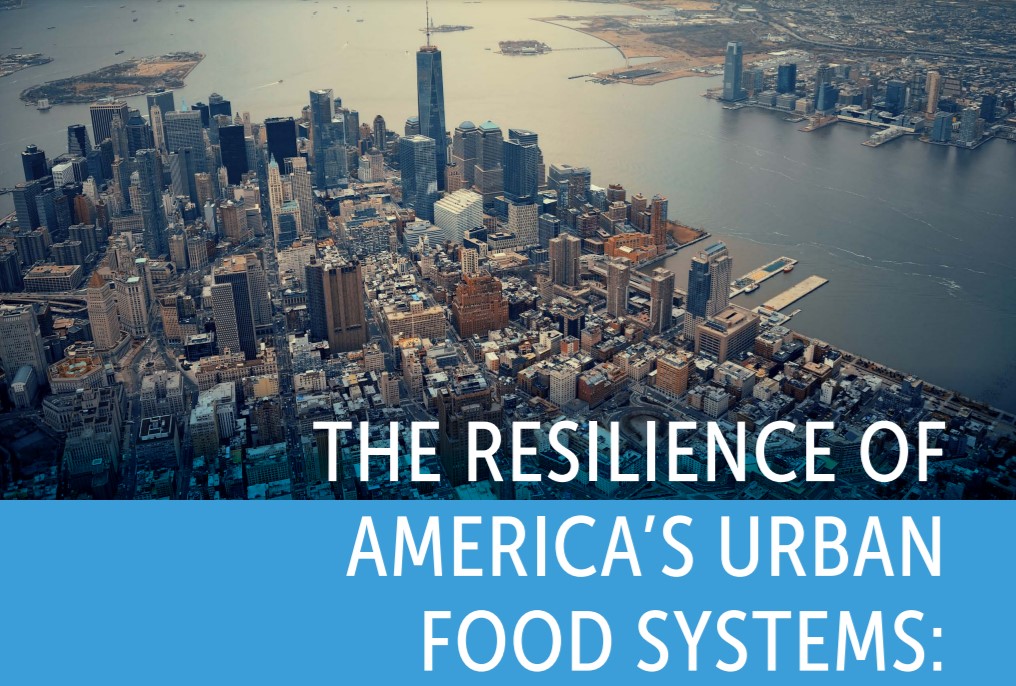
The Resilience of America’s Urban Food Systems: Evidence from Five Cities
- This report highlights the importance of considering food systems in city-level resilience planning, and uses a novel food system resilience framework that provides city leaders with guidance on incorporating food systems into broader resilience plans following a disaster.
- The report details main components of urban food systems in five different U.S. cities and provides a comparative analysis of food system vulnerabilities in these urban areas.
- This report is an excellent resource for those working to engage with city leaders to plan for a food system that is resilient to disasters and crises.

How Food Secure Are We if Natural Disaster Strikes?
- This article describes the increased risk of a severe hurricane on the Hawaiian islands as a result of climate change, and draws on the experiences of Puerto Ricans following Hurricane Maria in 2017 to describe Hawaii’s development of an emergency management plan for severe weather events.
- The author presents critical considerations and plans for reducing risks to food security from natural disasters, from both an island-wide and city-level perspective.
- This article is a useful framework for those in the process of creating resilience plans, providing practical considerations for maintaining food security after a disaster.
How Food Secure Are We if Natural Disaster Strikes? University of Hawaii. McGregor, L.W. (n.d.)
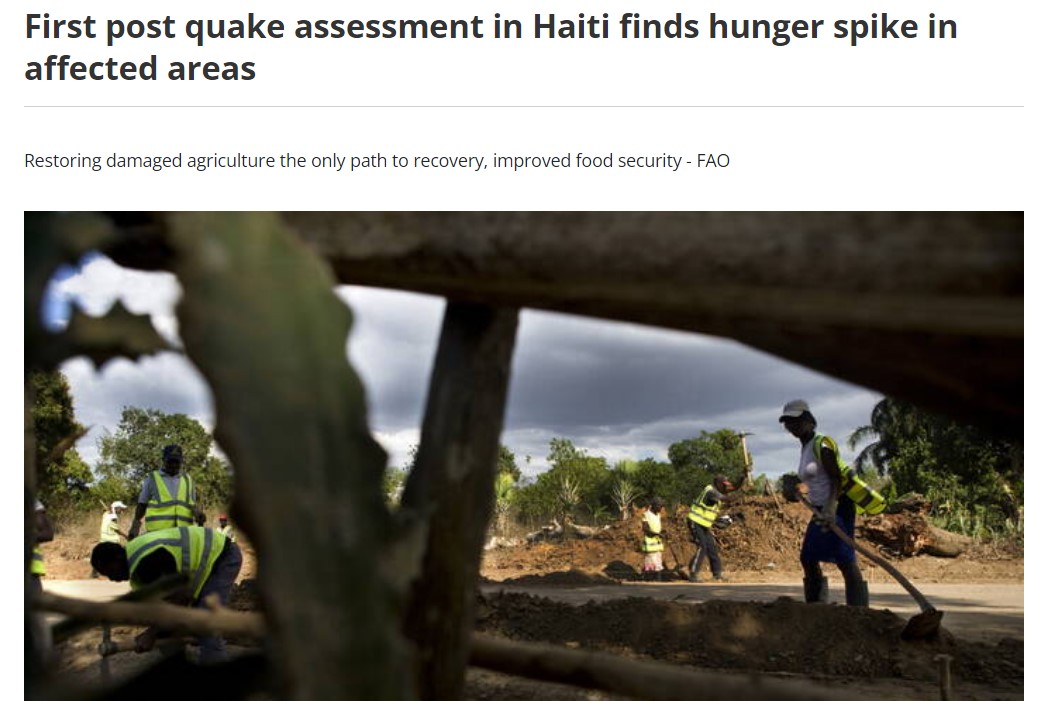
First Post Quake Assessment in Haiti Finds Hunger Spike in Affected Areas
- This article describes the devastating effects of a 7.2 magnitude earthquake on small farming communities in Haiti, leaving an already vulnerable nation facing worsened hunger and food insecurity.
- Support plans for large population of Haitians experiencing food insecurity as a result of the earthquake are described, which include crop and cash transfers, rehabilitation of agricultural infrastructure, and providing farmers in need with small livestock and fisheries.
- This report describes important interventions and their associated costs, and is a useful resource for those planning for resilient agricultural systems, specifically in areas that have primarily agricultural economies.
4. Emergency food plans in the context of chronic food insecurity
The fourth webinar in our series is focused on emergency food planning in cities that do not have robust food supply chains, who have to deal with food shortages on a regular basis. In this situation, vulnerable populations may be chronically food insecure. Policy interventions are needed to address underlying food supply chain issues, while emergency food plans need to include rapid assessments, rapid deployment and feedback loops, to make sure food shortages are addressed efficiently and equitably.
Wednesday 12th January, 14:00PM GMT
7.15: Dr Feisal Rahman - insights on monitoring and policy interventions for food insecurity from his recent research that examines food insecurity in two high-growth cities in Bangladesh: Mongla and Noapara. Download presentation.
22.30: Sumaiya Binte Selim - a colleague of Dr. Rahman, shares plans for food security interventions in Mongla and Noapara. Download presentation.
30.10: Karima Ahmed Al-Hada’a - discusses the multisector SUN approach that is being used to address Yemen’s food crisis. Download presentation.
42.20: Ali Selim Alpaslan - presents the case of Izmir, Turkey, which has a resilient local food system due to highly productive, localised food system. Download presentation.
Explore topic resources by clicking Read More.
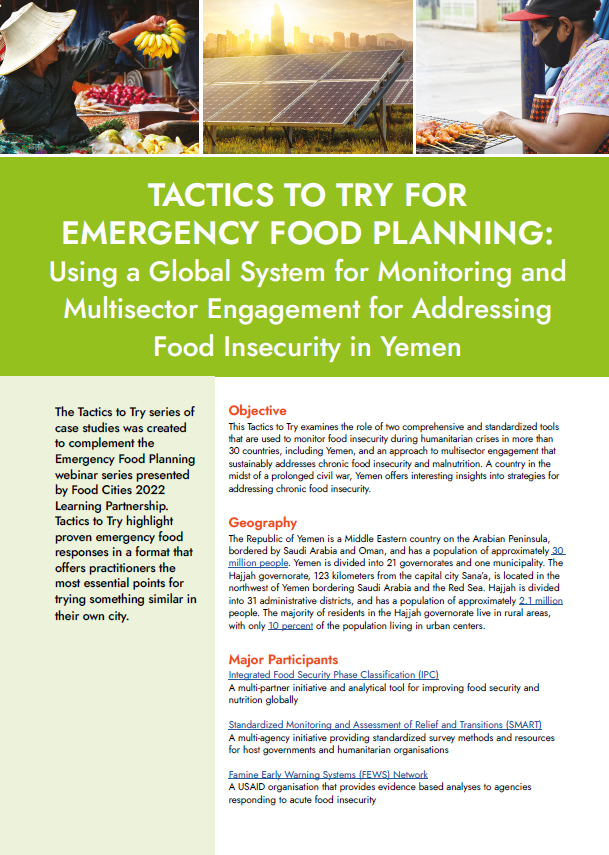
Tactics to Try - Using a Global System for Monitoring and Multisector Engagement for Addressing Food Insecurity in Yemen
This Tactics to Try examines the role of two comprehensive and standardized tools that are used to monitor food insecurity during humanitarian crises in more than 30 countries, including Yemen, and an approach to multisector engagement that
sustainably addresses chronic food insecurity and malnutrition. A country in the midst of a prolonged civil war, Yemen offers interesting insights into strategies for addressing chronic food insecurity.
Improving Nutrition Supply Chains for Children
- This brief article describes actions undertaken by the Central African Republic government, aided by UNICEF, to address supply chain inefficiencies to improve access to ready-to-use therapeutic food for children suffering from severe acute malnutrition
- UNICEF describes their Supply Chain Maturity Scorecard and its role in assisting countries where supply chain inefficiencies can exacerbate existing nutritional deficits
- This article is useful for those seeking to examine critical supply chains in terms of their maturity and efficiency to address nutrition gaps
UNICEF (25 June 2020) Improving Nutrition Supply Chains for Children
Yemen Multisectoral Nutrition Action Plan
- This report presents the Republic of Yemen’s Multisectoral Nutrition Plan (MSNAP) in detail, describing key stakeholders in government and the private sector and their roles in addressing the food security crisis in Yemen.
- The report describes the process of developing the MSNAP, provides an in-depth contextual analysis of the immediate causes of malnutrition and the problems associated with low food availability and access, presents nutrition-specific strategies and programmes, and outlines the MSNAP strategic framework with priorities and goals.
- This report is an excellent resource for those planning large-scale nutrition interventions in their cities or countries. It provides key information on engaging and coordinating amongst multiple stakeholders and presents key goals to work towards.
Republic of Yemen (2020) Yemen Multisectoral Nutrition Action Plan.
Contextualizing the COVID-19 Pandemic’s Impact on Food Security in Two Small Cities in Bangladesh
- This article explores the effects of the pandemic on the food security of two small cities, Mongla and Noapara, in Bangladesh
- The authors describe coping strategies used by residents to mitigate the effects of food insecurity, and discusses how the pandemic exacerbated existing food and nutrition insecurities.
- This article is useful to those planning for addressing food insecurity on multiple scales at the city level, exploring issues seen by both small and large cities as a result of the pandemic.
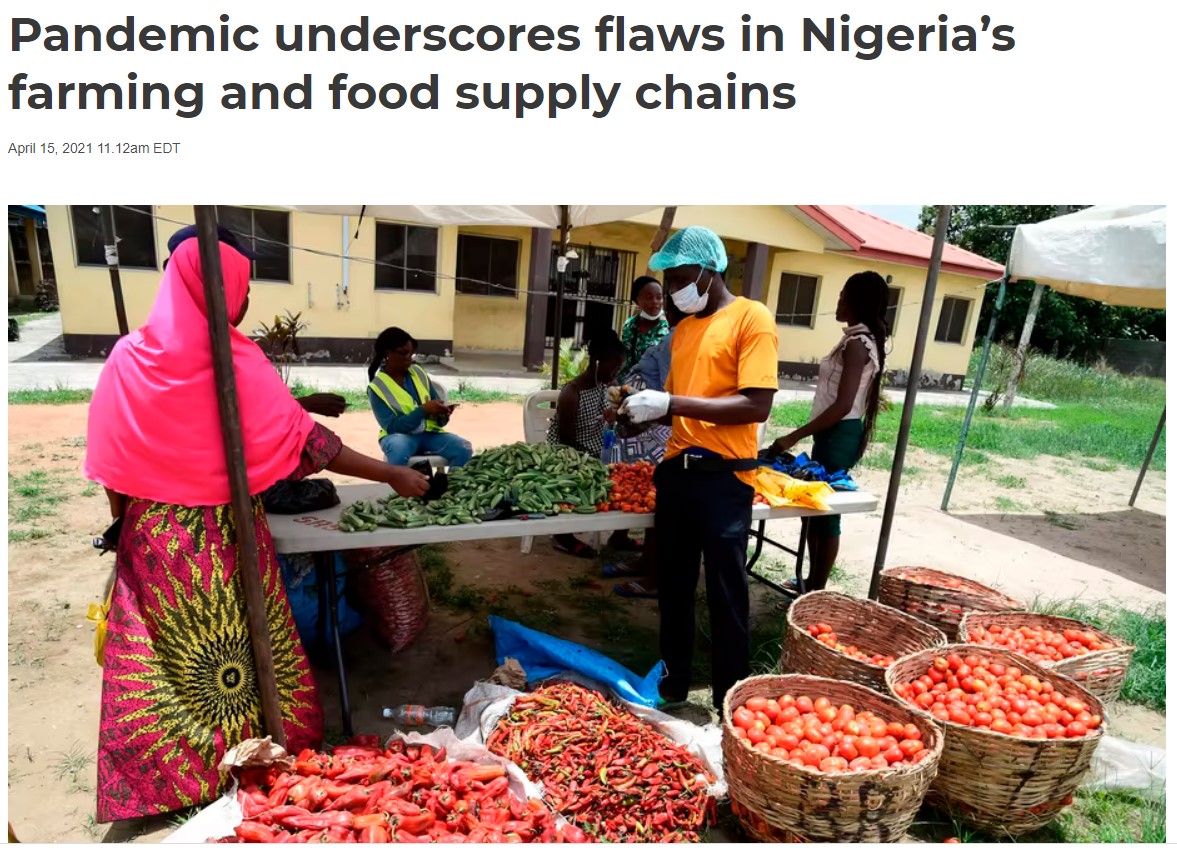
Pandemic Underscores Flaws in Nigeria’s Farming and Food Supply Chains
- This article explores the structural flaws in Nigeria’s agriculture, food systems, and infrastructure that leave many food insecure.
- The author presents several key policy recommendations to improve the agri-food supply chain and reduce Nigeria’s reliance on food imports and thereby improve food security.
- This article is useful for anyone seeking policy interventions to improve agri-food supply chains and reduce chronic hunger at the city or national level.
Adendle, A. (15 April 2021) Pandemic Underscores Flaws in Nigeria’s Farming and Food Supply Chains.
Investment in Resilient Food Systems in the Most Vulnerable and Fragile Regions is Critical
- This brief article describes the rising food insecurity crisis as related to increasing climate shocks and violent conflict globally. The authors call for transformative change by developing plans that protect communities most vulnerable to hunger and food insecurity.
- The authors present three action points to advance food system transformation, calling for a cease to agricultural land expansion and investment in food security, increasing the resilience of food landscapes, and building conflict-resistant food systems.
- This article is an excellent roadmap for those seeking to transform a failing food system through new policy interventions aimed at protecting a community, city, or country’s most vulnerable citizens.
5. A roadmap for creating your city’s emergency food response and recovery plan
The final webinar of our series provides a roadmap for integrating what you have learned in the previous webinars to create an emergency food response and recovery plan that addresses your city’s unique food system pressures. We will also explore how emergency food plans may be integrated into a city’s broader food strategy and how to move from plan to implementation. The webinar will also point participants to relevant resources on the Learning Platform for ongoing support.
Wednesday 2nd February, 14:00PM GMT
3.30: Dr. Kim Zeuli, The Feeding Cities Group - Summary from the series
13.00: Stefania Amato, The C40 Network - C40 perspective on Emergency Food Planning (Download presentation)
26.30: Emmanuel Velasco, Quezon City, The Philippines - Case study of harnessing COVID emergency to create enduring resilience (Download presentation)
33.45: Edwin Marty, City of Austin, Texas - Case study of city based food planning (Download presentation)
46.50: Filippo Gavazzeni, MUFPP - MUFPP perspective on Emergency Food Planning (Download presentation)
58.25: Dr. Jess Halliday, RUAF - Introduction to the FAO-RUAF CRFS assessment and planning process (Download presentation)
1.29.20: Barbara Emanuel, Consultant to C40 and expert on resilient food systems - Observations on series
1.41.25: Anna Taylor, Executive Director of The Food Foundation - Reflections and next steps
Explore topic resources by clicking Read More.
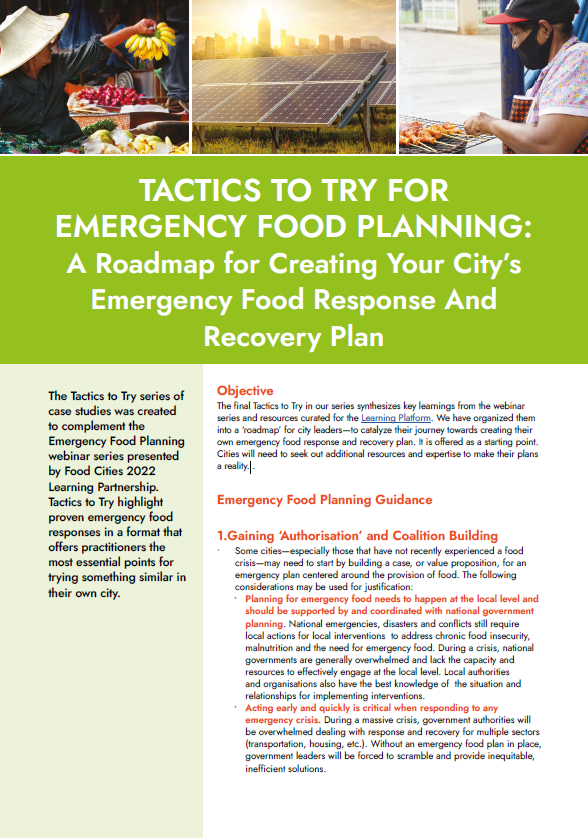
Tactics To Try - A Roadmap for Creating Your City’s Emergency Food Response And Recovery Plan
The final Tactics to Try in our series synthesizes key learnings from the webinar series and resources curated for the Learning Platform. We have organized them into a ‘roadmap’ for city leaders—to catalyze their journey towards creating their own emergency food response and recovery plan. It is offered as a starting point. Cities will need to seek out additional resources and expertise to make their plans
a reality.
Tactics To Try - A Roadmap for Creating Your City’s Emergency Food Response And Recovery Plan
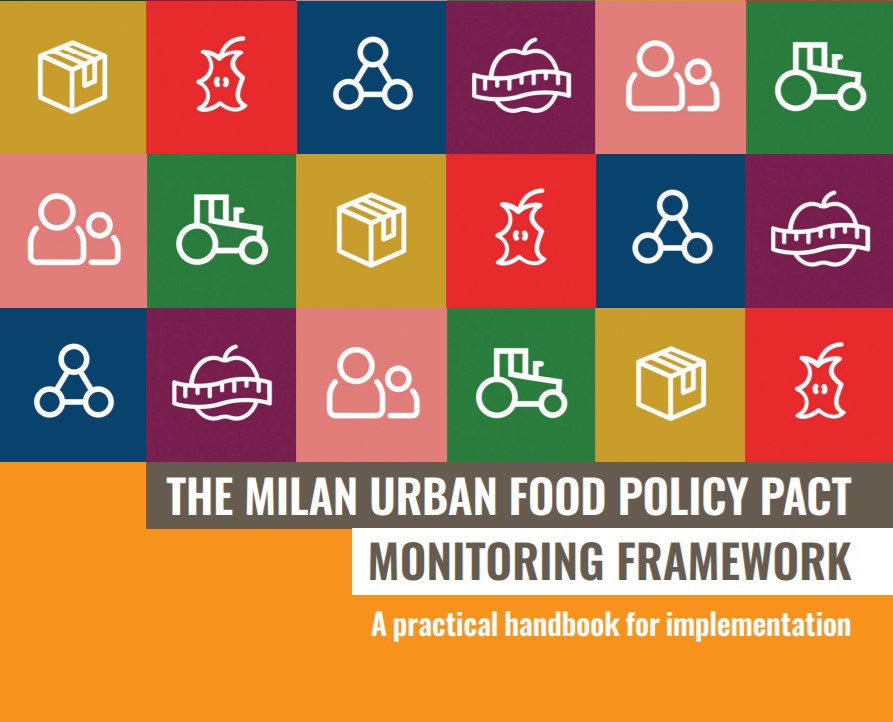
The Milan Urban Food Policy Pact monitoring framework: A practical handbook for implementation
- This resource is a handbook, providing a detailed overview of the MUFPP monitoring framework tool and practical guidance for implementing the framework. This tool enables cities to plan for and analyze disruptions or changes to urban food systems.
- The handbook guides the reader through a step-by-step process of implementing the monitoring framework, with the goal of providing cities practical guidance on measuring the impact of their food policies, processes, and initiatives.
- This handbook is a critical resource for any city working to establish a monitoring system of their urban food policies and practices, and provides detailed explanations of how to work with MUFPP indicators. This handbook walks users through all steps of implementing a monitoring framework.
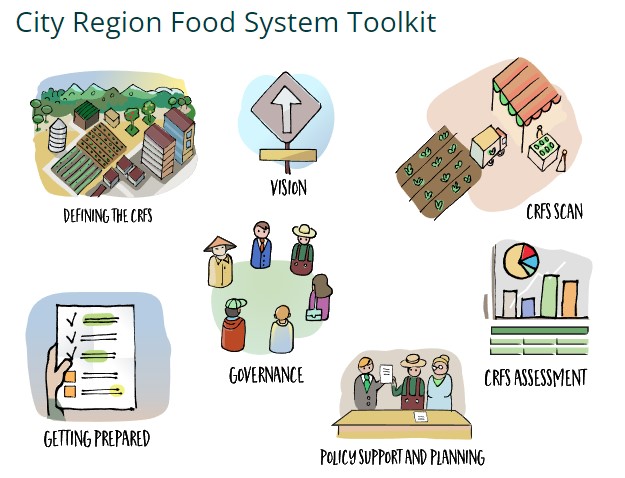
Introduction to the Toolkit, Food for Cities Programme
- This web resource is a crucial resource for cities looking to build or better understand their city region food system. The resource provides an introduction to the City Region Food System Toolkit, giving guidance on how to create and assess sustainable, resilient city region food systems.
- This toolkit contains important information about defining a city/region, collecting and analyzing data through both rapid and more in-depth assessments, and provides guidance on how to engage policymakers and other key stakeholders in urban food system planning.
- This interactive website is a comprehensive introduction to the City Region Food System Toolkit, and will be an excellent resource for cities as they begin to plan for and develop their city region food systems.
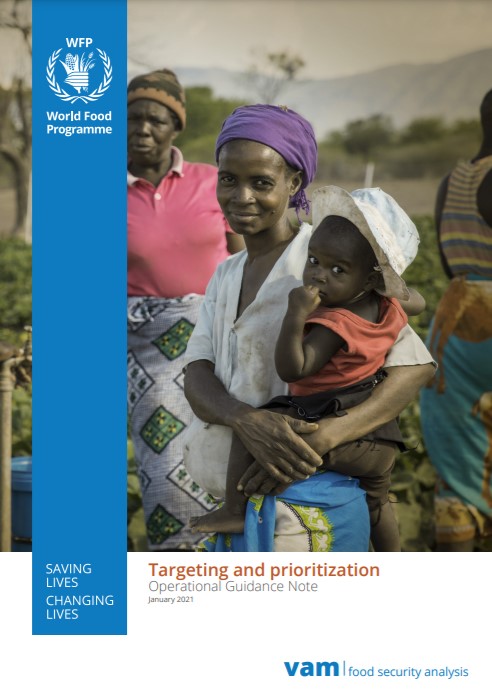
Targeting and Prioritization: Operational Guidance Note
- This resource provides background information and guidance on how to successfully target and prioritize the people most vulnerable to food insecurity or hunger in a region or community. The objectives of this targeting and prioritization strategy are to ensure that the most vulnerable receive aid, minimizing distribution of food aid to the non-vulnerable, collect accurate data on who should receive aid, and building trust in communities through these actions.
- This resource is a critical guide on how to determine who is most vulnerable to hunger and food insecurity, and provides practical solutions to ensure that aid is reaching the people most in need. This resource will be extremely useful to any cities who are developing strategies to reach their most vulnerable community members, providing a step-by-step guide on how to develop a needs assessment and a targeting and prioritization plan.
World Food Programme (2021) Targeting and Prioritization: Operational Guidance Note. WFP. Rome.
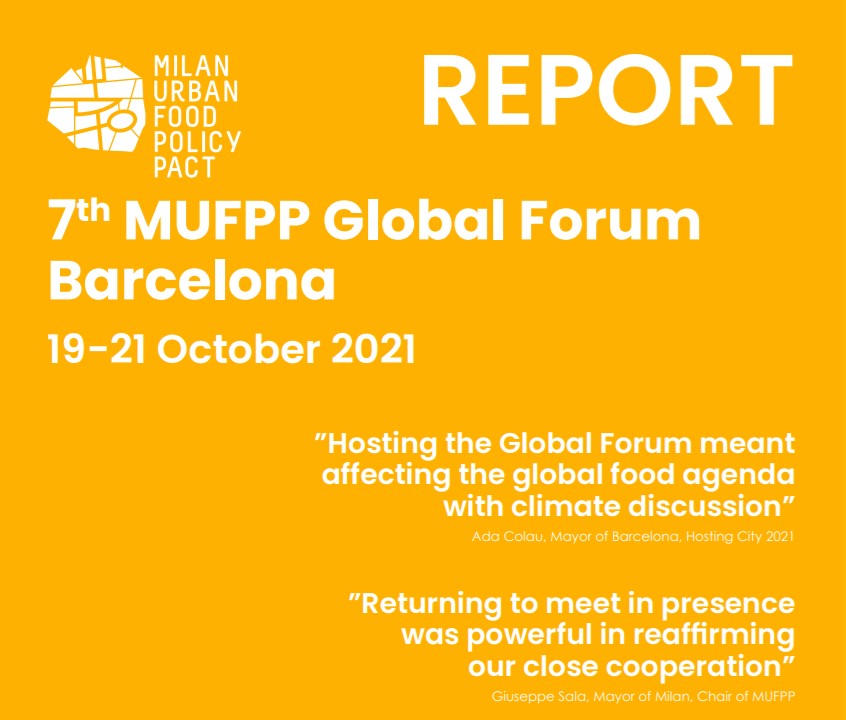
Report: 7th MUFPP Global Forum, Barcelona
- This report provides an overview of the 7th annual MUFPP Global Forum, held in Barcelona. Plenary sessions, regionalization strategies, activities, and the state of the pact are reviewed in this report, along with information about participating cities
- This is an excellent resource for anyone wanting to review the topics covered at the most recent MUFPP Global Forum, and it provides updates on what cities are doing globally to address local food needs.
MUFPP Secretariat (2021) Report: 7th MUFPP Global Forum, Barcelona. City of Milan, Mayor’s Office.


